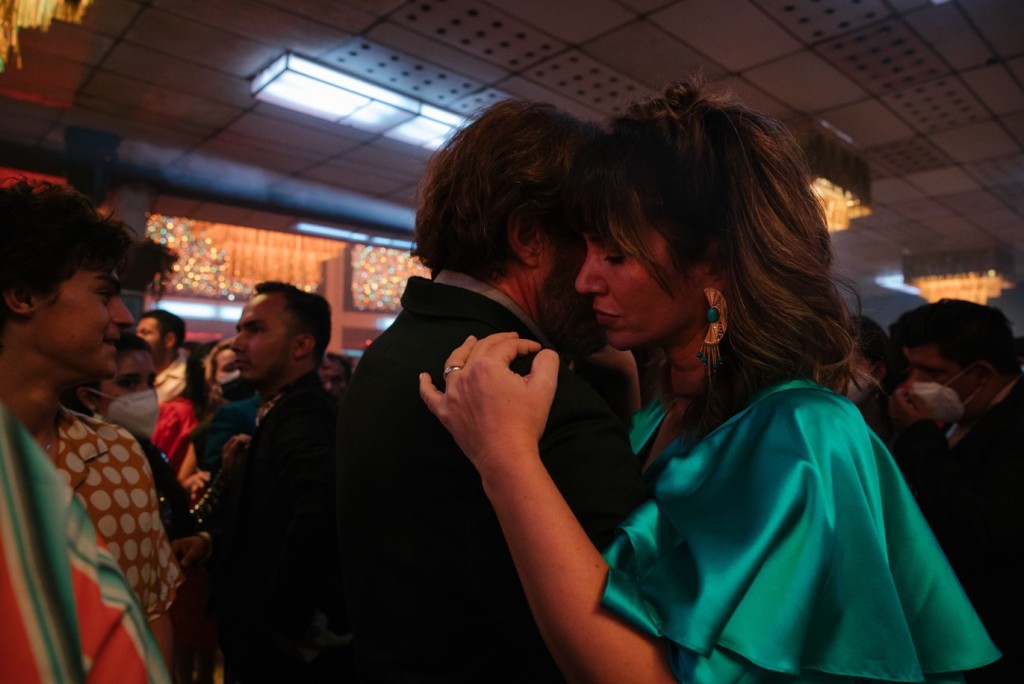The sixth and unquestionably most personal feature film by Mexican director Alejandro González Iárritu (of “The Revenant”) is “Bardo, False Chronicle of a Handful of Truths.” Daniel Giménez Cacho plays renowned Mexican journalist turned documentary filmmaker Silverio Gama in the story. For the first time in 15 years, Silverio travels home to celebrate his most recent work in the weeks before becoming the first Latin American to win the prestigious Alethea Award. While there, he experiences existential crisis and imposter syndrome and notices that his interactions with the world are becoming more and more surreal. Here is all the information you require on Bardo, False Chronicle of a Handful of Truths’ conclusion. Spoilers follow.
Bardo False Chronicle of a Handful of Truths Plot Summary
One of the most unsettling opening scenes in recent cinema opens the movie. A newborn is examined by the doctors, who then declare that the infant wants to go back inside his mother and assist him in doing so. The mother is revealed to be Silverio’s wife Luca (Griselda Siciliani). She drags the umbilical chord across the floor as she leaves the medical facility with Silverio.
Silverio can be seen on the Los Angeles Metro with a pouch containing three axolotls in the first scene following the opening titles. It’s crucial to remember this moment since we’ll be returning to it in the movie’s concluding act. Despite criticism for being indulgent in his most recent documentary, “False Chronicle of a Handful of Truths,” Silverio is respected for his journalistic ethics and his body of work is appreciated globally. Silverio has lived abroad for 15 years, and during that time, both he and his native nation have undergone changes.
There is a big uproar when Silverio finally arrives in Mexico City. Additionally, a quick overview of the events outside of Silverio’s immediate environment is provided. The governments of both nations are participating in the American corporation Amazon’s plan to purchase the Mexican state of Baja California. When Silverio runs into the American ambassador, he offers the president access for an interview in exchange for helping the president build relationships with Hispanics. They get together in Chapultepec Castle, the site of the Nios Héroes suicides and the Battle of Chapultepec in 1847. Silverio drollily remarks that Mexican history is replete with examples of transforming shameful failures into mythic successes as the envoy laments the slain boys and their wasted potential.
The struggle unfolds in front of the ambassador and Silverio, with humorous music playing in the background. The tone of the movie is set by this sense of the bizarre. It follows a disorganized plot that doesn’t adhere to any clear narrative setting and is highly quirky and wandering. The viewer navigates Silverio’s experience by hopping from one group of occurrences to another. Since we are used to rapid changes in rhythm and setting in movies, the transitions between the sequences feel unnaturally flawless.
Bardo, False Chronicle of a Handful of Truths Ending: Is Silverio Dreaming?
The most important discovery in the plot, which puts the entire storyline into perspective, is hinted at in the title of the movie. The Tibetan Buddhist term “Bardo” approximately translates as the period of time between life and death. It is revealed in the movie’s final act that Silverio had a stroke while riding the L.A. Metro. For his son Lorenzo, he had purchased three axolotls in the same style as those the boy had as a youngster. Even when the pouch with the axolotls dropped out of Silverio’s hand and the three salamanders perished, no one realized that he was having a stroke. The cleaning crew member, who was also a Mexican immigrant, didn’t become aware of what had happened until the train had arrived at its final station.
Since then, Silverio has been unconscious. The movie has been showing us Silverio’s brain trying to make sense of his memories up until this point. And for this reason, everything seems so unbelievable.
At the same time, several elements of the story that appear to be happening just in Silverio’s imagination actually take place in reality. Amazon purchasing Baja California is a prime illustration of this. It is made obvious that the sale is taking place outside of Silverio’s dreams in a scenario where his family and friends visit him.
Rarely do our dreams have a set pattern or organization. If they can recall their dreams from the night before, most people consider themselves lucky. Iárritu appears to have imitated this feeling of disorder in Silverio’s coma as a filmmaker. Iárritu also mimics the rapid changes that occur in dreams. Because of this, the two sections in the movie don’t abruptly end. The alterations take place all at once. On the night his work is honored in Mexico, Silverio can speak to his deceased father in a split second before meeting up with his dementia-stricken mother. In the following, he may see Hernán Cortés while standing over a heap of indigenous peoples’ dead bodies in the Zócalo, the city’s central square, and come face to face with the realities of Mexico’s gang violence and the people who disappear there every year.
Iárritu’s “Bardo, False Chronicle of a Handful of Truths,” as previously indicated, is a very personal movie for him, despite the fact that he has emphasized in numerous interviews that the story is heavily dramatized. He exhorts the audience to feel the movie instead of trying to analyze it, claiming that this is how film originally began.
Thus, “Bardo, False Chronicle of a Handful of Truths” is not only Iárritu’s most intimate picture, but also the one that comes the closest to capturing his vision of cinema. In order to follow the filmmaker’s dream, he advises the audience to let go and close their minds. He also points out that while narration and narrative are important components that can be added afterwards, they are not the only options for cinema.
In the movie, Silverio stands in for Iárritu and symbolizes his ideals and anxieties. The same circumstances that shaped Iárritu also shape him. They are both Mexican immigrants who have spent more than 20 years in Los Angeles and are the offspring of a demented mother. Conflicts over the generational divide plague their relationships with their parents and kids, which is a typical and universal problem in immigrant households.
Does Silverio Die?
In the movie “Bardo, False Chronicle of a Handful of Truths,” themes like immigration, identity, family, art, and dreams are all explored. With the revelation that the main character, Silverio, is currently in a coma and his family has chosen to bring him to Mexico, the non-linear narrative’s peak is reached. The only other instance of truth in the movie may be when his daughter, Camila, accepts the Alethea Award in his place, but even that sequence deviates into the bizarre, leaving us to question if we are still watching one of Silverio’s dreams.
Although the movie doesn’t conclude abruptly, it still does so without explaining Silverio’s ultimate destiny. At the movie’s conclusion, Silverio discovers himself in a desert. Although it would look like it, this is most likely not the afterlife but rather a place created in Silverio’s imagination where he meets up with his deceased relatives and appears to ignore the projections of his wife and children. There is a duplicate of Silverio as well, and they move in unison. The movie’s conclusion is just as how it starts, when Silverio is seen flying and making enormous leaps. We are left wondering if Silverio survives, passes away, or stays unconscious.
I believe we can assume that Silverio is still unconscious because the movie’s visual imagery completes a circle. He has learned that in his dream, he has a good deal of control over what occurs around him, and he prefers that to the uncertainty of reality. If he ever awakens, he will have to deal with life and all the restrictions and duties it entails. He appears pleased for the time being to be constrained in his own mind because that allows him the freedom he seeks.
What Happened to Mateo?
The reverse birth of Mateo, Silverio and Luca’s firstborn, is seen early in the film. The episode is portrayed via the lens of Silverio’s experience, much like practically everything else in the movie, and is therefore strongly surrealistic.
Mateo was born and lived for 30 hours before dying, as is later revealed in the movie. Since then, Silverio and Luca have had his ashes. Despite having two more kids, they never fully recovered from Mateo’s passing. It is safe to assume that Silverio and his family visited Mexico in the real world as well and had a roughly identical experience, without the surrealism, since he purchases the axolotls in his dream after returning to America and has the salamanders with him when he suffers the stroke. If so, the Gama family allowed themselves to finally go on by burying Mateo’s ashes in the actual ocean.




